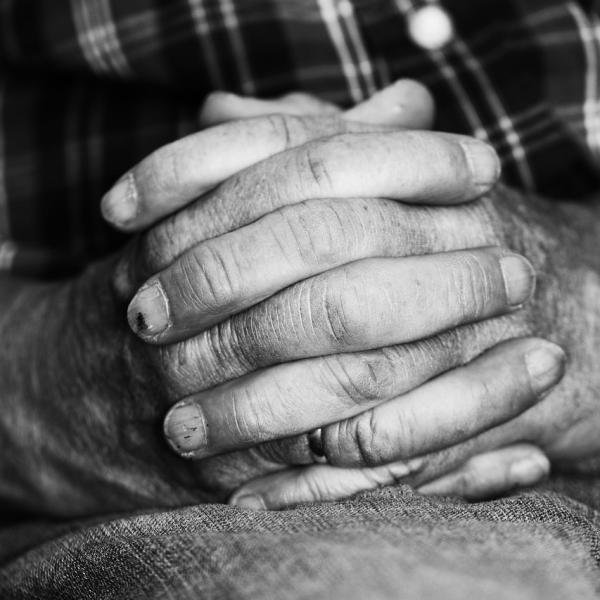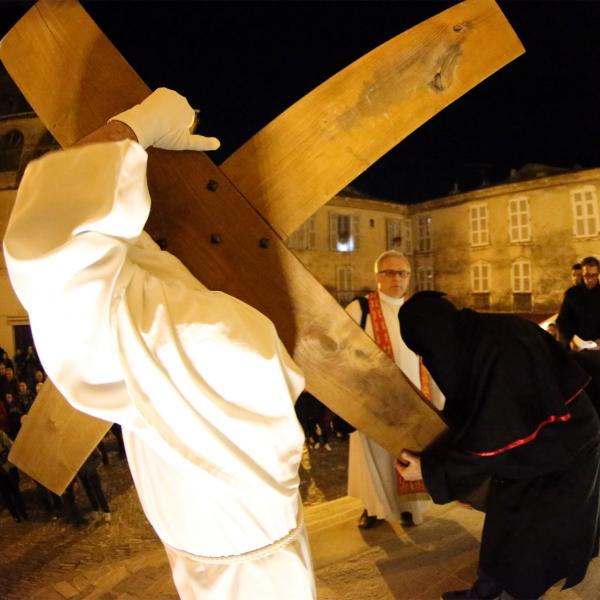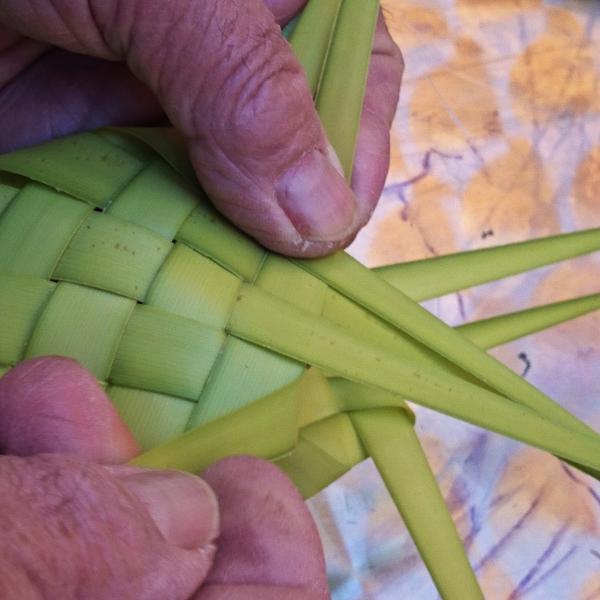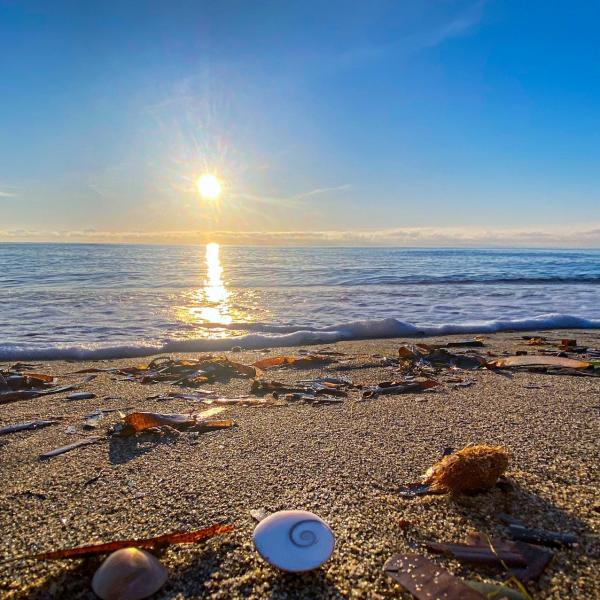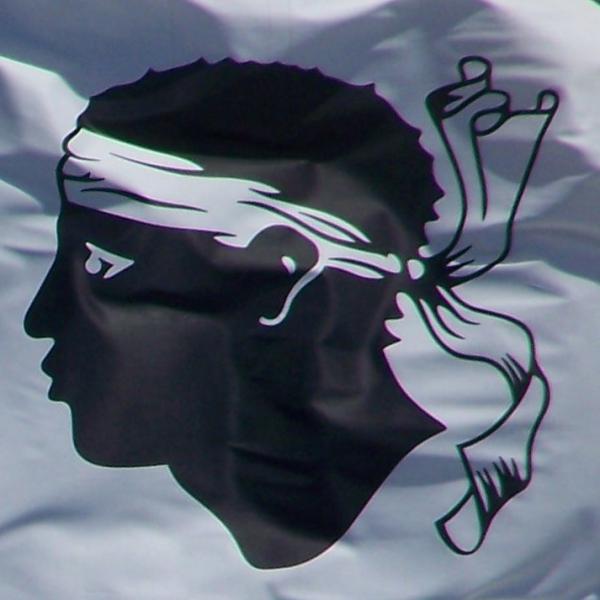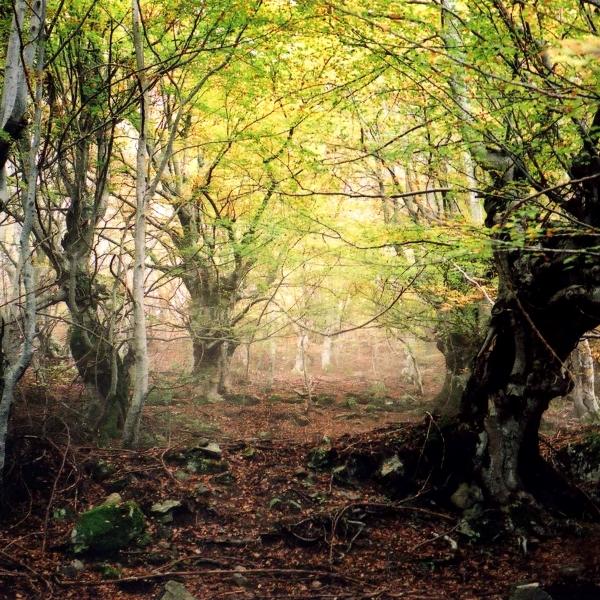The Corsican soul
Beliefs and superstitions constitute an important part of Corsicans traditions and heritage. Since centuries, the islanders are immersed in myths and beliefs. During traditional gatherings, elders told stories of witches, goblins, devil... combining weird and wonderful but also truthful stories about bandits of honour, invasions, family rivalries... The oral tradition allowed tales and legends to pass from generation to generation. It's from these different legends combining reality and fantasy that the Corsican soul emerged. Discover those traditions and share very special moments!
habits and customs
L'OCHJU
«L'ochju», the Evil Eye, is an ancient belief in Corsica. Various amulets exist to ward off the jinx: coral, Saint Lucy's eye, salt, or to do the sign of the horns (hand gesture formed by extending the index and little finger while holding down with the thumb the middle and ring fingers). To remove «l'ochju» you need a «signatore» (a kind of faith healer) who exorcise the affected person by dint of prayers and rituals. This knowledge is passed down during Christmas night. Faith healing needs to be learnt, but remains first of all a gift which is not granted to everyone. It can work only if you truly believe it... Usually, envy and jealousy are the causes of the Evil Eye, this is why children and happy people are the most vulnerable.
U CATENACCIU
Catenacciu is a Corsican tradition which happens during the [LIEN]Good Friday procession. The «Catenacciu» person carries out all the Stations of the Cross through the city, which symbolises the Christ on his way to his crucifixion. The Penitent is wearing a scarlet alb with red balaclava, and the parish is the only one who knows his identity. Carrying a solid oak cross and chains on his feet, the Catenacciu has to fall 3 times during his walk before being symbolically crucified, just like the Christ. There is no procession more scrupulously respected than this one, that's why it's a good opportunity to get into local customs of the island, with thousands of persons who come to see it.
Catenacciu is a Corsican tradition which happens during the [LIEN]Good Friday procession. The «Catenacciu» person carries out all the Stations of the Cross through the city, which symbolises the Christ on his way to his crucifixion. The Penitent is wearing a scarlet alb with red balaclava, and the parish is the only one who knows his identity. Carrying a solid oak cross and chains on his feet, the Catenacciu has to fall 3 times during his walk before being symbolically crucified, just like the Christ. There is no procession more scrupulously respected than this one, that's why it's a good opportunity to get into local customs of the island, with thousands of persons who come to see it.
E CRUCETTE
During Palm Sunday, many Corsicans brandish their «crucette» (little cross) so they can be blessed by the vicar. Those crucette are then kept as lucky charms until next year. Every year, the old branches have to be burnt. You can keep them the way you want: hanged on the wall, in a drawer... And it's not rare to see cars with crucette hanging on the rear-view mirror. Crucette are made of branches removed from the heart of palm trees. It's a savoir faire passed down from generation to generation. The braiding go from simple cross to more difficult forms, like a campanile or a fish. A branch of olive tree can also be hooked to it.
During Palm Sunday, many Corsicans brandish their «crucette» (little cross) so they can be blessed by the vicar. Those crucette are then kept as lucky charms until next year. Every year, the old branches have to be burnt. You can keep them the way you want: hanged on the wall, in a drawer... And it's not rare to see cars with crucette hanging on the rear-view mirror. Crucette are made of branches removed from the heart of palm trees. It's a savoir faire passed down from generation to generation. The braiding go from simple cross to more difficult forms, like a campanile or a fish. A branch of olive tree can also be hooked to it.
legends
SAINT LUCY'S EYE
It's a shellfish coverplate that we can pick on the beach after big storms. Its size varies from 2 millimetres to 3 centimetres. It's during the 4th century that the legend of Saint Lucy started: a young lady from the Syracuse's nobility was able to cure her mother, who was suffering from an incurable disease, through repetitive prayers to the Virgin Mary. Giving her sincere and unlimited devotion, she ripped off her own eyes and threw them into the sea in order not to turn away from her faith and to keep admirers away. Completely devoted to the cult, she worked numerous miracles. As an answer to her faithfulness, the Holy Virgin restored her eyesight, and gave her «ochji belli e lucenti»: eyes even more beautiful and radiant. The shellfish's coverplate called «Turban Snail», localised on the Mediterranean shores, symbolises Saint Lucy's eyes. It's said that wearking one wards off bad luck, and boosts good luck. It should be noted that variants of this symbolism can be found in all the Mediterranean basin and beyond that, especially in Indonesia. In Corsica, it's considered as a lucky charm.
It's a shellfish coverplate that we can pick on the beach after big storms. Its size varies from 2 millimetres to 3 centimetres. It's during the 4th century that the legend of Saint Lucy started: a young lady from the Syracuse's nobility was able to cure her mother, who was suffering from an incurable disease, through repetitive prayers to the Virgin Mary. Giving her sincere and unlimited devotion, she ripped off her own eyes and threw them into the sea in order not to turn away from her faith and to keep admirers away. Completely devoted to the cult, she worked numerous miracles. As an answer to her faithfulness, the Holy Virgin restored her eyesight, and gave her «ochji belli e lucenti»: eyes even more beautiful and radiant. The shellfish's coverplate called «Turban Snail», localised on the Mediterranean shores, symbolises Saint Lucy's eyes. It's said that wearking one wards off bad luck, and boosts good luck. It should be noted that variants of this symbolism can be found in all the Mediterranean basin and beyond that, especially in Indonesia. In Corsica, it's considered as a lucky charm.
A BANDERA
No one can exactly tell the true origin of the Moor's head, but several legends remain. A moorish servant was plotting against the King of Aragon, but a Corsican foiled the plot by bringing the Moor's head in a white sheet. Grateful, the king said to him: «from now on, this will be the flag of your country». During the Saracen invasions, Corsicans would impale the heads of the Moorish officers, who could be recognised thanks to the white headbands tied around their foreheads. During battles, brandishing the heads as trophies, Corsicans would take a psychological advantage over their attackers. In History, some things are sure, so we know that the Moor's head, whose headband was first covering its eyes, took its origins in Aragon. Aragon's relationship with Corsica started in 1927, when Pope Boniface VIII gave the adminitration of Corsica and Sardinia to the Kingdom of Aragon. He never ruled Corsica but gave his coast of arms to Sardinia (a Red Cross surrounded by four Moor's heads on a white backround). In 1736, when Theodore de Neuhoff became the King of Corsica, he adopted the Moor's head in his coats or arms. At this time, the head was turned to the right. In 1745, when Ghjuvan Petru Gaffori attacked the citadel of Bastia which was besieged by the Genovese, he adopted this flag. The headband was lifted us as a symbol of «Corsica opened its eyes». In 1760, Pasquale Paoli formalised Gaffori's choice. He removed the jewels from the Moor's head and had it turned to the left. In 1762, the Cunsulta di Corti adopted the Moor's head in the Corsica coats of arms.
No one can exactly tell the true origin of the Moor's head, but several legends remain. A moorish servant was plotting against the King of Aragon, but a Corsican foiled the plot by bringing the Moor's head in a white sheet. Grateful, the king said to him: «from now on, this will be the flag of your country». During the Saracen invasions, Corsicans would impale the heads of the Moorish officers, who could be recognised thanks to the white headbands tied around their foreheads. During battles, brandishing the heads as trophies, Corsicans would take a psychological advantage over their attackers. In History, some things are sure, so we know that the Moor's head, whose headband was first covering its eyes, took its origins in Aragon. Aragon's relationship with Corsica started in 1927, when Pope Boniface VIII gave the adminitration of Corsica and Sardinia to the Kingdom of Aragon. He never ruled Corsica but gave his coast of arms to Sardinia (a Red Cross surrounded by four Moor's heads on a white backround). In 1736, when Theodore de Neuhoff became the King of Corsica, he adopted the Moor's head in his coats or arms. At this time, the head was turned to the right. In 1745, when Ghjuvan Petru Gaffori attacked the citadel of Bastia which was besieged by the Genovese, he adopted this flag. The headband was lifted us as a symbol of «Corsica opened its eyes». In 1760, Pasquale Paoli formalised Gaffori's choice. He removed the jewels from the Moor's head and had it turned to the left. In 1762, the Cunsulta di Corti adopted the Moor's head in the Corsica coats of arms.
I MAZZERI
The «Mazzeru» is a sorcerer who predicts the death of human beings during his dreams. He hunts and kills the first wild beast that he finds, turn it over, and sees on its face the visage of a person from his entourage who will die shortly. After that their lifespan cannot exceed one year and 3 days. The «Mazzeru» isn't judged as a bad person, but rather like someone strange and mysterious, since he kills against its will during its dreams.
The «Mazzeru» is a sorcerer who predicts the death of human beings during his dreams. He hunts and kills the first wild beast that he finds, turn it over, and sees on its face the visage of a person from his entourage who will die shortly. After that their lifespan cannot exceed one year and 3 days. The «Mazzeru» isn't judged as a bad person, but rather like someone strange and mysterious, since he kills against its will during its dreams.
